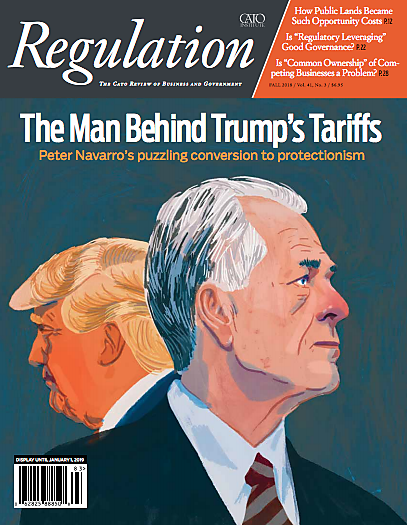The Department of Homeland Security (DHS) finalized a regulation today that would ban legal status to immigrants who its officers determine are likely to become “public charges”—that is, wards of the state. DHS claims that the rule will promote self-sufficiency among immigrants, but the goal is a farce. The rule is designed to exclude immigrants regardless of the degree to which they are supporting themselves and contributing positively to the economy. DHS actually made the final rule worse than the proposed rule.
DHS responded to my comments on the proposed rule in its final rule without naming me specifically. My primary complaint was that DHS’s proposed definition of a public charge was anyone who received more than 15 percent of the poverty line in benefits, which entirely ignored the degree to which they supported themselves. On pages 245 and 246, DHS cites and responds to my comment (and others) on this point. DHS writes:
Other commenters stated that a noncitizen family of four making 250 percent of the federal poverty line could be deemed public charges if they received $2.50 per person per day, although such a family would be about 95 percent self-sufficient. A commenter stated that therefore, DHS’s standard to measure self-sufficiency had no rational connection with actual self-sufficiency.
Yet DHS responded to my comment by significantly worsening this issue. DHS writes that because “a lack of self-sufficiency is a single duration-based threshold,” it will now “consider an alien likely to become a public charge at any time in the future if the alien is more likely than not to receive public benefits for longer than 12 months in the aggregate in any 36-month period.” In other words, it doesn’t even matter the value of benefits received anymore. Use alone will trigger a public charge denial.
This means that the government adjudicator could predict that an immigrant will be 99 percent self-sufficient and still ban them. This rule has almost no connection whatsoever to requiring immigrants to support themselves. It is entirely about banning legal immigrants who this administration sees as a threat—socially and economically.
DHS actually defines a dependent of an immigrant as anyone how receives 50 percent of their support from the immigrant. But it defines an immigrant as dependent on the government if they receive any support at all from the government, even as little as 1 percent of their income.
My second major complaint in my comments was that the model that “DHS’s model of predicting the likelihood of becoming a public charge is nontransparent and inaccurate” and that “DHS should use administrative or survey data to create a statistically valid factor model that predicts the probability of an immigrant becoming a public charge.”
DHS cited my comment (p. 410) but made no adjustments to its rule as a result. DHS’s response essentially ignores the difficulty of its methodology. Specifically, DHS treats multiple negative factors as having greater weight than those factors in isolation, even though I presented evidence that this isn’t true. Once income is known, for example, immigrant high school dropouts aren’t more likely to receive benefits if they don’t speak English. But DHS will count lack of English against the applicant regardless.
DHS’s flawed definition and the flawed methodology ultimately produce a public charge test that is designed to fail. It will result in denials of legal status to immigrants, including spouses of U.S. citizens. That is the goal and the only goal of this methodologically-challenged administration.
Cato has long advocated walling off the welfare state from immigrants, as opposed to walling off the country from them, but the public charge rule inverts this principle: using the prospect that immigrants might use welfare as an excuse to stop immigrants from coming legally.
